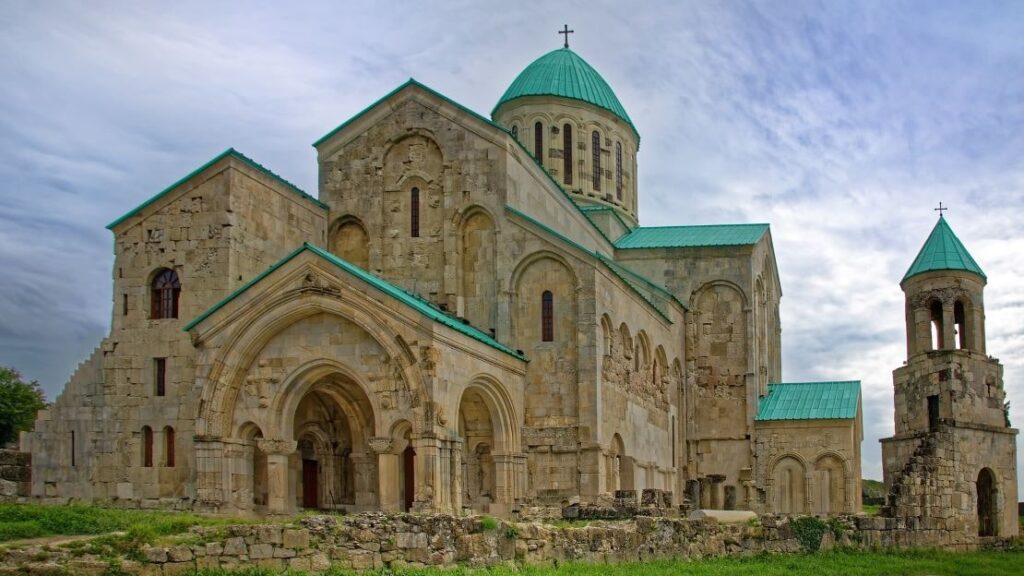
Ancient Times
The history of the Caucasus begins in ancient times and is intertwined with the history of the European, Asian and Middle Eastern populations that have marked the evolution of man from ancient times to the present day: the region, in fact, was known in Hellas and appeared in the legends of ancient Greece (Prometheus was chained in the Caucasus mountains and Jason and the Argonauts went in search of the Golden Fleece in Colchis, Caucasus region). Over the centuries civilizations such as that of the Persians, Greeks, Romans, Khazars, Arabs, Huns, Turks, Mongols and Russians invaded the Caucasus and gave it its complex and varied ethnolinguistic composition, managing to leave traces of its presence inside of Caucasian society and, at the same time, emphasizing more local distinctive characters.
The ancient Greeks were furious to give us news and information regarding the kingdoms of Armenia, Albania, Colchis and Iberia, state entities that over time merged and were assimilated into the Iranian empires (Medes, Achaemenids, Parthians) until 95 AD when, under the reign of Armenia of the “King of Kings” Tigranes the Great, the region was unified by a single guide who expanded its borders from East to West passing through Mesopotamia, Cappadocia, Cilicia and Syria, up to ‘Egypt. This hegemony began to eclipse with Roman, and then Byzantine expansion, until the Arab conquest of Persia in the seventh century, when the region became a possession of the Muslim Caliphate and the Emirate of Armenia was created.
Kingdoms of Armenia and Georgia
After a series of revolts against the caliphate, the Kingdom of Armenia was born, with the capital Ani, and the Kingdom of Georgia, both engaged in fighting Arab expansionism first and then Turkish expansionism. In 1204 the Kingdom of Georgia became the strongest Christian state in the Near East capable of influencing maritime and commercial traffic in the Eastern Mediterranean. Subsequently the region was invaded by the Mongols and the Ottomans, who, in addition to the annexation of most of the territories, allowed the formation of local kingdoms and khananati.
Disputed between Iran, Russia and the Ottoman Empire during the 19th century, the Caucasus was unified as a single entity during the Russian Civil War under the name of the Transcaucasian Federal Democratic Republic (9 April 1918 – 26 May 1918) and after the Soviet conquest as Transcaucasian Soviet Federative Socialist Republic (12 March 1922 – 5 December 1936).

The Fall of the USSR
After the fall of the USSR, Georgia, Azerbaijan and Armenia proclaimed their independence in 1991 and began a process of independent or semi-independent economic recovery from Moscow which allowed the southern area to develop security and stability. state greater than the northern one in which the cohabitation of different peoples and ethnic groups has led to territorial disputes that have never been resolved and merged into conflicts.
The ethnic problem, as highlighted above, and that of the control of natural resources represent the two main causes of conflict in the Caucasus region which from the fall of the former USSR to today has witnessed the Nagorno-Karabakh conflict (1992-1994) between Armenia and Azerbaijan, the one between Ossetia and Ingushetia (1992-1993), the cause of hundreds of thousands of refugees and a significant exodus of people in the Russian Federation and neighboring areas, the First and Second Chechen Conflicts (1994-1996 and 1999-2009) which saw mainly Islamic militants and the security forces of Moscow and the conflict of South Ossetia (2008) which sanctioned the independence of Abkhazia and South Ossetia thanks to Russian support against the Georgian army.